Einleitung
Rüste deinen iMac mit mehr Speicherplatz aus.
Bei dieser Reparatur wird in einigen Schritten beschrieben, wie du die Festplatte durch eine SSD aufrüsten kannst. Insbesondere wird gezeigt, wie der Temperatursensor der SSD installiert wird, so dass der Lüfter des iMac mit der richtigen Drehzahl arbeitet.
Bevor du am iMac arbeitest: Ziehe den Stecker raus, drücke und halte dann den Einschaltknopf für 10 sec um Kondensatoren zu entladen.
Sei sehr vorsichtig! Berühre keine Kondensatorleitungen und keine offenliegenden Lötstellen auf der Rückseite des Netzteils.
Werkzeuge
Ersatzteile
-
-
Befestige je einen Heavy Duty Saugheber in den beiden oberen Ecken der Glasscheibe.
-
Halte den Saugheber leicht an der Scheibe und hebe den beweglichen Henkel bis er parallel mit dem anderen ist (wie im dritten Bild gezeigt).
-
-
-
Hebe die Glasscheibe rechtwinklig so weit vom Display weg, dass sich die metallenen Befestigungsstifte an der Unterseite der Oberkante lösen.
-
Ziehe die Glasscheibe weg von der unteren Kante des iMac und lege sie vorsichtig beiseite.
-
-
-
Lege den iMac vorsichtig mit der Rückseite flach hin.
-
Hebe eine der oberen Ecken des Displays mit einem dünnen Haken am Metallrahmen leicht an.
-
-
-
Ziehe vorsichtig mit deinen Fingern das vertical Sync-Kabel aus der Steckverbindung auf dem LED-Treiberboard nahe der oberen linken Ecke deines iMac.
-
-
-
Drücke die beiden Pins des Displaykabels zusammen, um es aus seinem Anschluss auf dem Logic Board zu befreien.
-
Ziehe den Stecker des Displaykabels aus dem Anschluss auf dem Logic Board.
-
-
-
Hebe das Display weit genug aus dem Gehäuse, um das Kabel der LED Hintergrundbeleuchtung vom LED-Board zu trennen.
-
-
-
Hebe das Display weit genug an, um das Kabel des LCD-Temperatursensors von seinem Anschluss auf dem Logic Board trennen zu können.
-
-
-
Löse die Stecker an den Kabeln vom Thermosensor, SATA Versorgungskabel und SATA Datenkabel ab.
-
-
-
Entferne die beiden Torx T10 Schrauben, welche die obere Halterung der Festplatte am äußeren Gehäuse befestigen.
-
-
-
Drehe die Festplatte etwas vom äußeren Gehäuse weg.
-
Hebe die Festplatte aus den beiden unteren Haltestiften heraus und entferne sie aus dem äußeren Gehäuse.
-
-
-
Entferne die beiden Torx T8 Schrauben, welche die obere Halterung an der Festplatte befestigen.
-
Entferne die obere Halterung von der Festplatte.
-
-
-
Drücke die Raste an der Frontplatte des Käfigs mit dem Finger herunter. Halte sie gedrückt und klappe die Frontplatte heraus.
-
Entferne die Frontplatte.
-
-
-
Richte den kleinen SATA Stecker so aus, dass die kurze Seite des SSD Steckers auf die kurze Seite am Stecker des Käfigs passt.
-
Schiebe das Laufwerk durch die Vorderseite des Käfigs ein, bis der SATA Stecker richtig verbunden ist.
-
-
-
Wenn du willst, kannst du die SSD mit den beiden im Kit mitgelieferten Kreuzschlitzschrauben #1 im Käfig festschrauben.
-
-
-
Stecke das mitgelieferte, für den Sensor vorbereitete SATA Versorgungskabel in den entsprechenden breiten Anschluss am Käfig.
-
-
-
Ziehe den Schutzstreifen von der Rückseite der kleinen Platine des Temperatursensors ab.
-
Klebe die Platine des Temperatursensors so nahe wie möglich am SATA Stecker an eine gut zugängliche Stelle auf der Metalloberfläche der SSD.
-
Falte die überschüssigen Kabel zum Temperatursensor aus dem Weg, so dass du den Käfig gut einbauen kannst.
-
-
-
Verbinde das SATA Versorgungskabel des iMac mit dem neuen Temperatursensor-geeigneten SATA Versorgungskabel.
-
Verlege die SATA Kabel so, dass sie nicht mit anderen Bauteilen ins Gehege kommen.
-
-
-
Suche auf der Hauptplatine einen Anschluss, der mit HD TMP oder HDD TEMP beschriftet ist.
-
Wenn das eben erwähnte Kabel noch mit der Hauptplatine verbunden ist, dann musst du es jetzt ablösen und entfernen. Es wird nicht mehr gebraucht.
-
Verbinde das schwarz-rote zweiadrige Kabel des Temperatursensors mit dem Anschluss auf der Hauptplatine, der mit HD TMP oder HDD TEMP beschriftet ist.
-
Führe das überschüssige Kabel so, dass es nicht mit den anderen Bauteilen ins Gehege kommt.
-
Um dein Gerät wieder zusammenzusetzen, folge den Schritten in umgekehrter Reihenfolge.
67 Kommentare
Hey I just replaced my i Mac HDD to a WD Green the previous one was really noisy. Thanks this walkthrough really helped me out. My I Macs now super quiet. This worked well for me. Thanks i fix it.
Your WD green is an SSD or another HDD?
Thanks for the guide guys, managed to replace a broken HDD in no time. However, I'd like to mention that standard torx bits could not be used to remove the display, a normal screwdriver with replacable bits is too thick to fit in, and bits are too short, so you will need something thinner (or longer bits).
Is it ok to replace the HDD with a SDD? (I know there is a tutorial for adding an SSD as a second drive, but I (and I'm sure others) don't have a big enough need or feel comfortable with the process involved.
What did you find out regarding this?
I know it’s been years, but I still have the machine alive and kicking, and I actually have an SSD there since a while. So yeah, that is indeed possible.
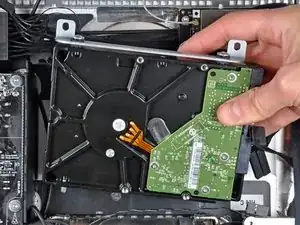
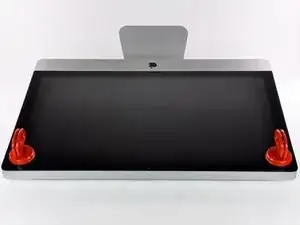

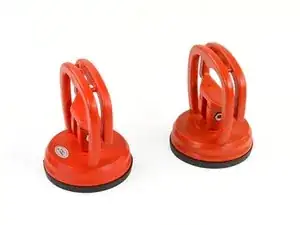
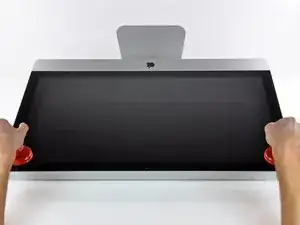
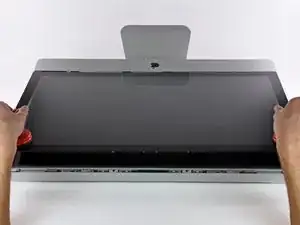
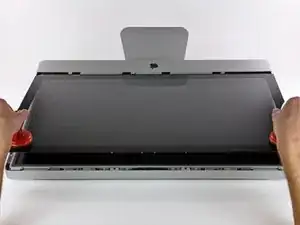
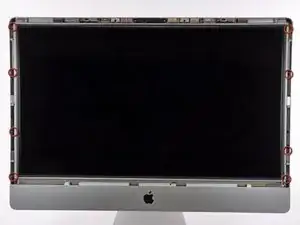
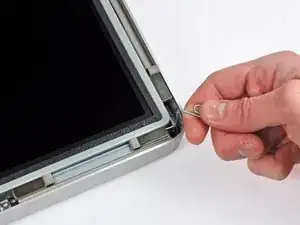
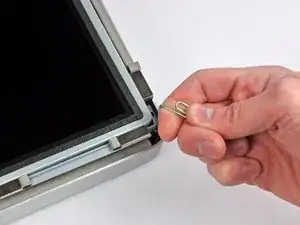
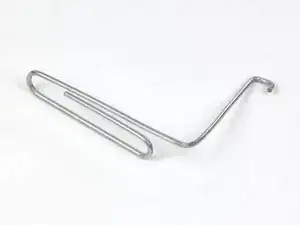
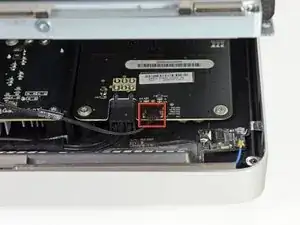
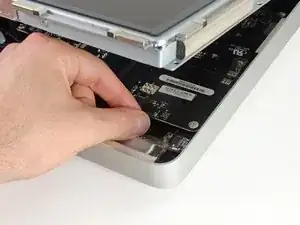
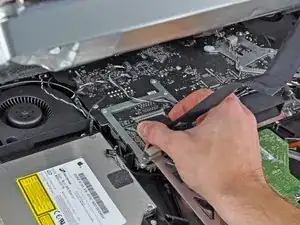
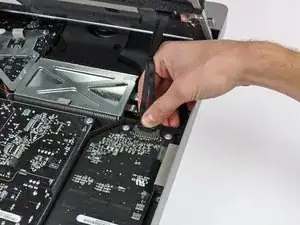
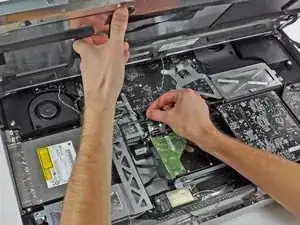
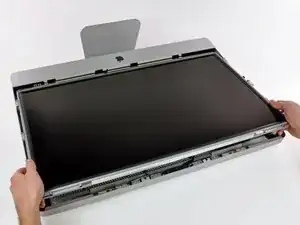
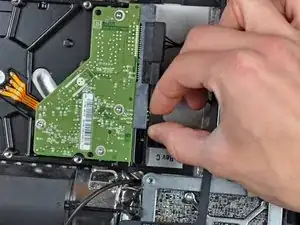
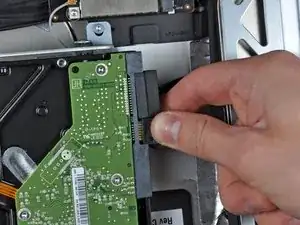
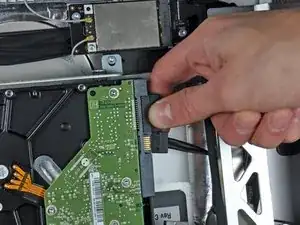
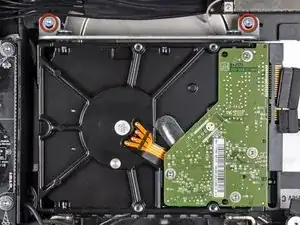
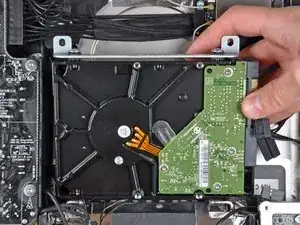
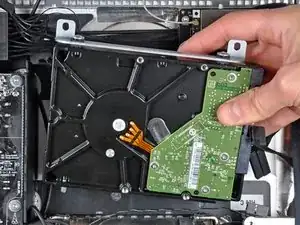
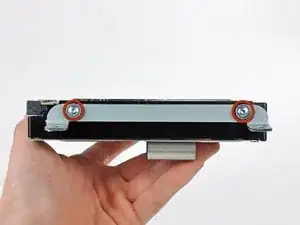
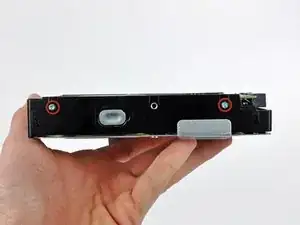
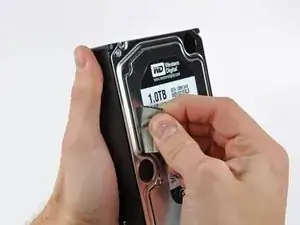
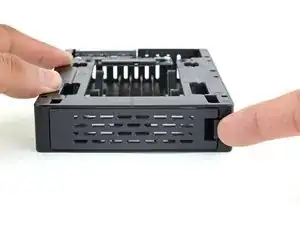
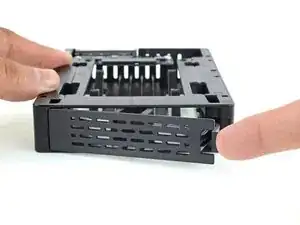
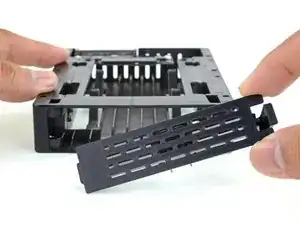
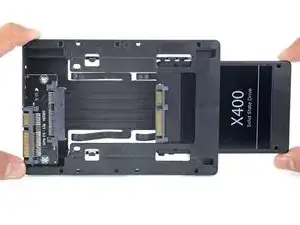
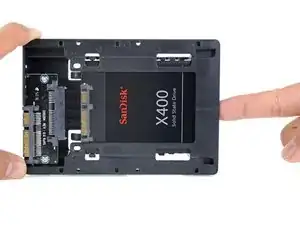
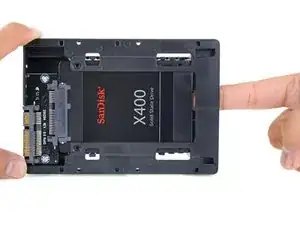
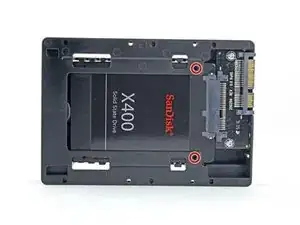
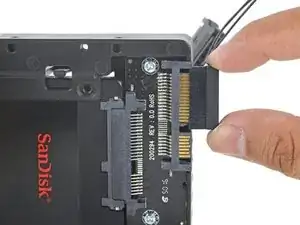
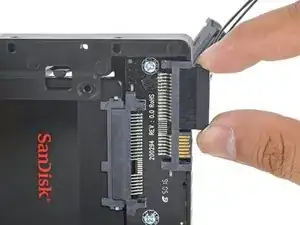
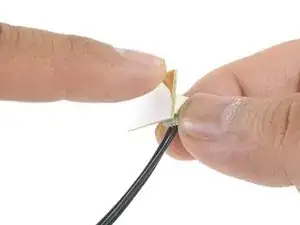
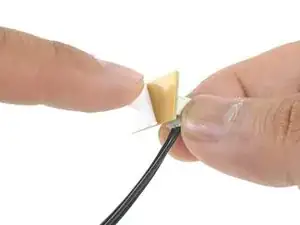
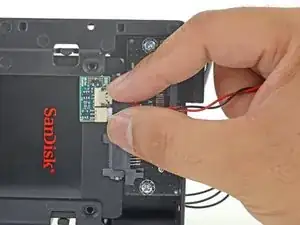
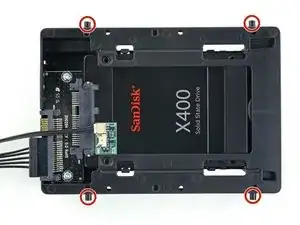
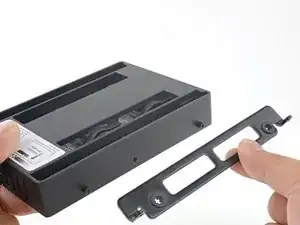
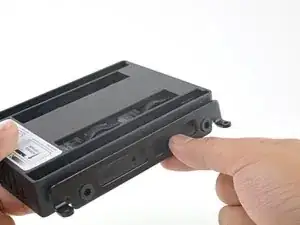
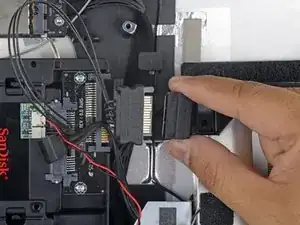
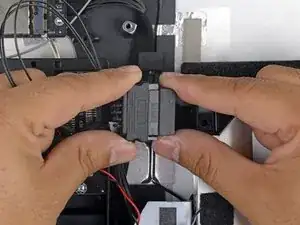
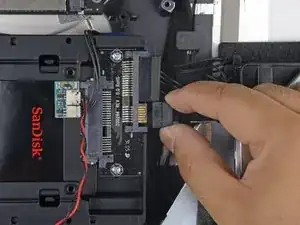
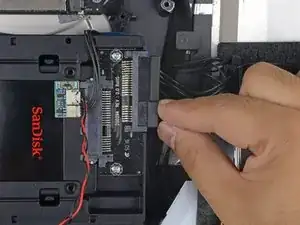
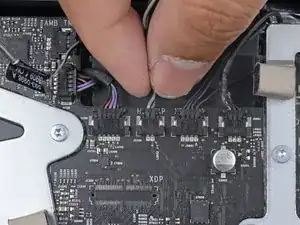
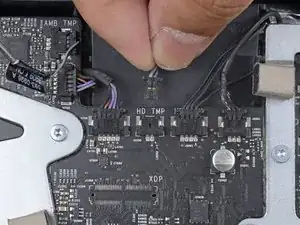
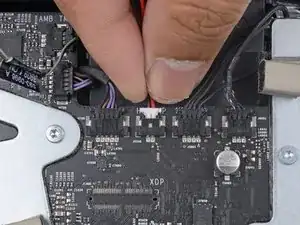

You can easily lift the glass panel off the magnets with only your fingernails (or something thin like a credit card or a guitar pick). No need to buy suction cups you will only use once.
Nick Caron -
Yes, you don't need the specific suction cups to remove the display cover - it's held on by magnets, and if you start at the center by the iSight you can work out to the edges and remove it. I had an iPhone screen suction cup around and it helped with balancing the screen when you pull it out fully, but by no ways is it required.
jtowner -
Great guide and pretty straight forward the only thing that took me ages and I didn't manage to undo were the power btn cable (step 28) and the thermal sensor (step 25) Seemed like they were glued on! Very difficult to remove and obviously conscious so I didn't break anything!
Eddie -
Thanks!!! Worked excellently.
I used a plunger (clean first ;-) to get the screen off, and http://exirion.net/ssdfanctrl/ for fan control.
Then, i did not take out the whole display and left it in the hinges on the bottom side and held it up with two small cardboard boxes. Easy enough to disconnect the hdd then.
I replaced with an ssd, put that into a ssd enclosure. Had to drill an extra hole in it to fasten the pins that hold it in place.
Used Carbon Copy Cloner to make an image from the old hdd, with the sad connected via usb. Checked it of it booted via System Preferences > Startup Disk. It worked so the took the imac apart and replaced the disk. Booted, everything was working as always, only faster!
Frank303 -
I'm replacing my optical drive too. what exactly needs to be plugged into the SSD? I don't have the kit - as I am not sure one is required if I buy something like this: http://www.amazon.com/gp/product/B0056OB...
Can you please advise? Can I do it with this piece, or do I need to get the entire bracket kit?
Allen Borza -
My display data cable forks, with a smaller section going up near the camera board. Where it forks, it is attached to the aluminum plate that attaches around the cpu board. I haven't seen any images that look similar, and I'm stumped at how to remove this second section of the cable. 2010 i7 build to order
Awolf -
Agree with the other comments here. Despite buying suction cups, not sure they were necessary as the screen removed very easily. A sat nav suction cup would do the job fine.
Stuart Bloomfield -
I can confirm that it is possible to remove the front glass using fingernails rather than suction cups. It isn’t easy, but if you try you should be able to pry off the glass.
I did this twice: once at the beginning of the procedure and once again at the end, when I realized that a big pice of lint was trapped under the glass.
gordonhamachi -
Don’t use suction cups. totally unnecessary. screen pops off with fingernails.
Kieran Hobbs -
The reason for caution about suction cups tends to be making sure you don’t apply uneven pressure on the edges of the glass and crack it in the process of removal. I do agree however that some pretty small suction cups would do fine. These suction cups can be had at your local princess auto (Harbor freight) for a few bucks and are useful elsewhere as well. if you use your fingernails or other items just try and do it evenly :)
Abirinder Brar -
good duct tape or gaffer tape wrapped around your hands makes an excellent glass removal 'tool'. Even clear packing tape works a charm.
Stu Blair -
A great first step that minimizes that first gust of dust migration when the glass is lifted is to clean the glass, sides *and the back* before lifting the glass, and then lift SLOWLY. Most of that dust is already trapped inside and pulled up as the screen lifts, but with care you can keep it there (or gently vacuum out with a micro vac…).
John -
before starting any of this…there is a device that you can use that comes with the IFixit kit to format and either clone or restore your hard drive to the new drive…it will save you a lot of headaches..it is a SSD enclosure that you can plug into your existing computer …
Tom Richter -
Thanks for the instructions. Before doing this the first time, suggest to everyone, read through at least twice. This is the easiest step, as you’ll soon see. As for removing the glass, USE suction cups, either the ones the sell here, or others. DON’T skimp. Also wear gloves when handling the glass. Don’t take chances.
ECJohansen -
Duct tape works too!
Dani -